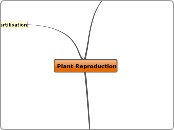Plant Reproduction
Pollination
Definition
The transfer of pollen from the anthers to the stigma for fertillastion to occur
Types
Insect

Diagram
Process
1. The insects and bees are attracted towards the nectary where sugar is made, and the petals give out scent, and are coloured to attract the insects.
2. The insect has to reach the nectar, which is at the bottom of the flower.
3. While it reaches it, some of the ovules made by the ovaries rub off onto the insect.
4. The next time the same insect goes to another plant to collect nectar, the ovaries which were stuck to the insect rub off against the stigma, which will allow fertilisation to occur.
Adaptations of the flower: The petals are scented, the Petals are brightly coloured which attract the insects. They nectar is located at the base of the flower, which makes the insect "dig" for it, making pollen rub off onto the insect
Adaptation of the flower
1.Brightly coloured petals and scent attracts insects.
2.Some produce nectar to also attract insects.
3.The 'dark lines' on the petals helps direct the insects to the nectar source.

Wind
Process
1.Pollen travels through the wind.
2.It lands on the stigma of the flower.
3.Pollen tube is formed and the pollen goes down to the ovary.
4.The pollen then fertilises with the egg cell inside the ovule.
5.The fertilized egg cell develop into an embryo, the ovule becomes the seed and the ovary forms the fruit.

Diagram
Adaptations of the flower
1.Adapted to produce great amount of pollen so that there is more chance some of the pollen grains can reach the stigma of the flower.
2.Pollen grains are light and smooth, giving the ability to travel long distance by moving air.
3.Have anthers and stigmas which project outside the flower.
4.Anthers easily shooked by wind, because they are not rigidly attached to the filaments.
5. Plants have a large surface area which allows them to have more chance to catch pollen on their stigma's
Germination
Definition
The process by which a seed grows into a mature plant
e.g. If a seed lands in a suitable place, it will germinate, there are a certain amounts of conditions that need to be met in a seed
Process
(In a Broad Bean)
1. the testa splits, and the radicle emerges from the seed.
2. The epicotyl elongates upwards, and lateral roots develop which are sometimes called secondary roots.
Conditions
Temperature This is so enzymes can function properly, and therefore speed up biological reactions, such as mitosis
Water: There is only about 20% water content in a seed, and in a fully mature plant, there is about 90%
Oxygen: This is vital for the seed to aerobically respire. This makes food, which then allows the seed to grow, and later photosynthesize, when there is a leaf.
The Process of a seed growing under the right conditions.
The seeds stay dormant, until the right stimulus is used, such as positive geotropism
When there is the right stimulus, the seed uses its fats, and food reserves to reach the top, and photosynthysize.
When a leaf manages to reach above soil, it can immediatly start photosynthesising. This can produce food, which will allow the plant to grow more!
Fertilisation
Definition
The process following pollination, required if a flower is to produce seeds.
The process by which the male gametes in the pollen grain meets the female gametes in the ovule.
The process by which a male and female sex cell fuse together to form a zygote.
Process 1
1. Pollen grain lands on stigma
2. Pollen tube grows down through the style to ovary
3. Nucleus from pollen moves down tube to ovary
Process 2
1. Male cell and female cell meet
2. Nuclei fuse together
3. The fertilised egg cell divides many times and form an embryo
4. Embryo grows into mature plant
Requirements
Gametes
Gametes are the sex cells of living organisms
In plants, male gametes is in the pollen grain
Female gamete, called the egg cell, is in the ovule
This is the fusion of the two Sex Cells
The nucleus of the male cell must reach the female nucleus of the egg cell, and fuse with it
